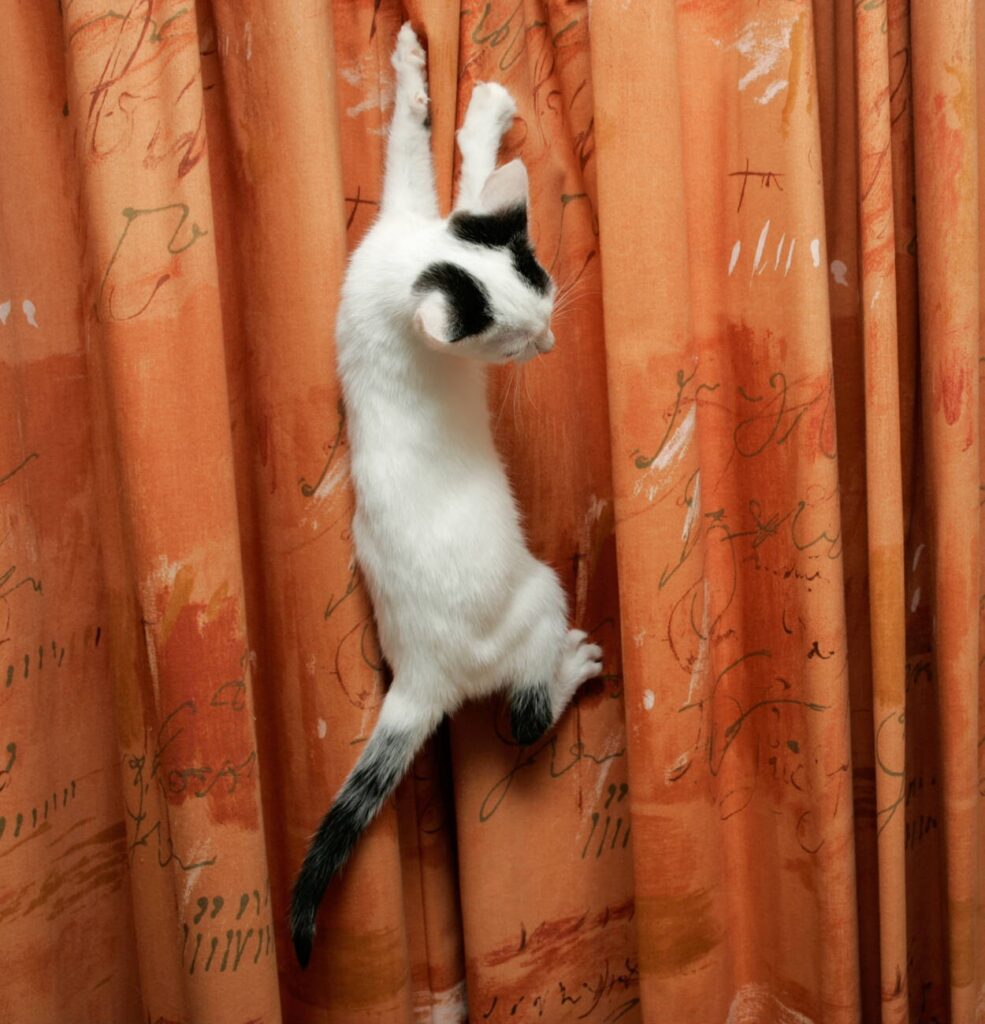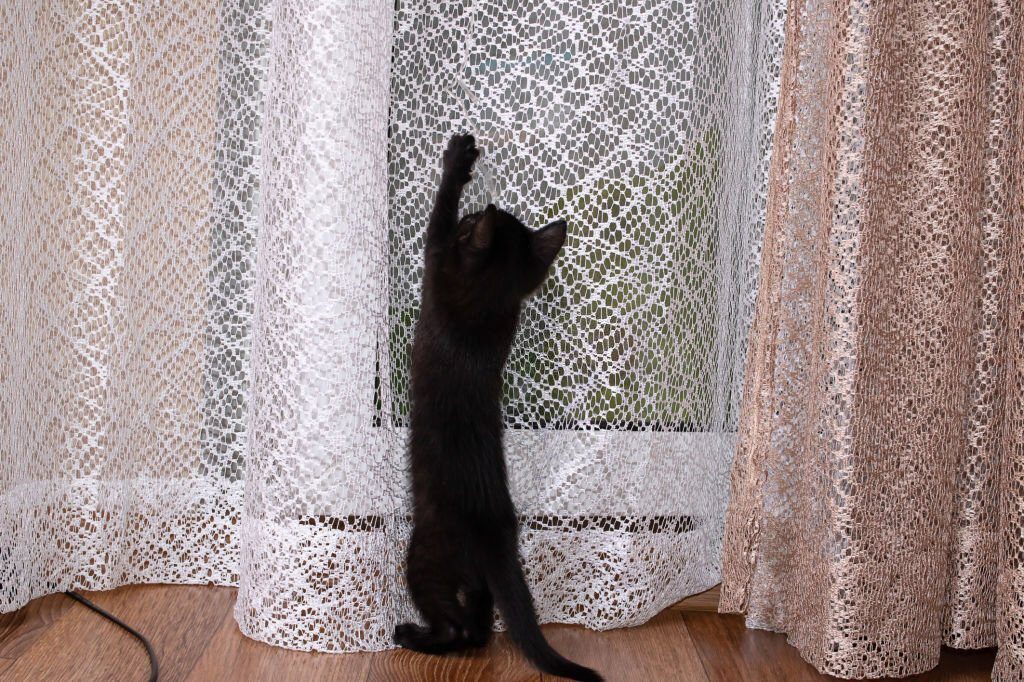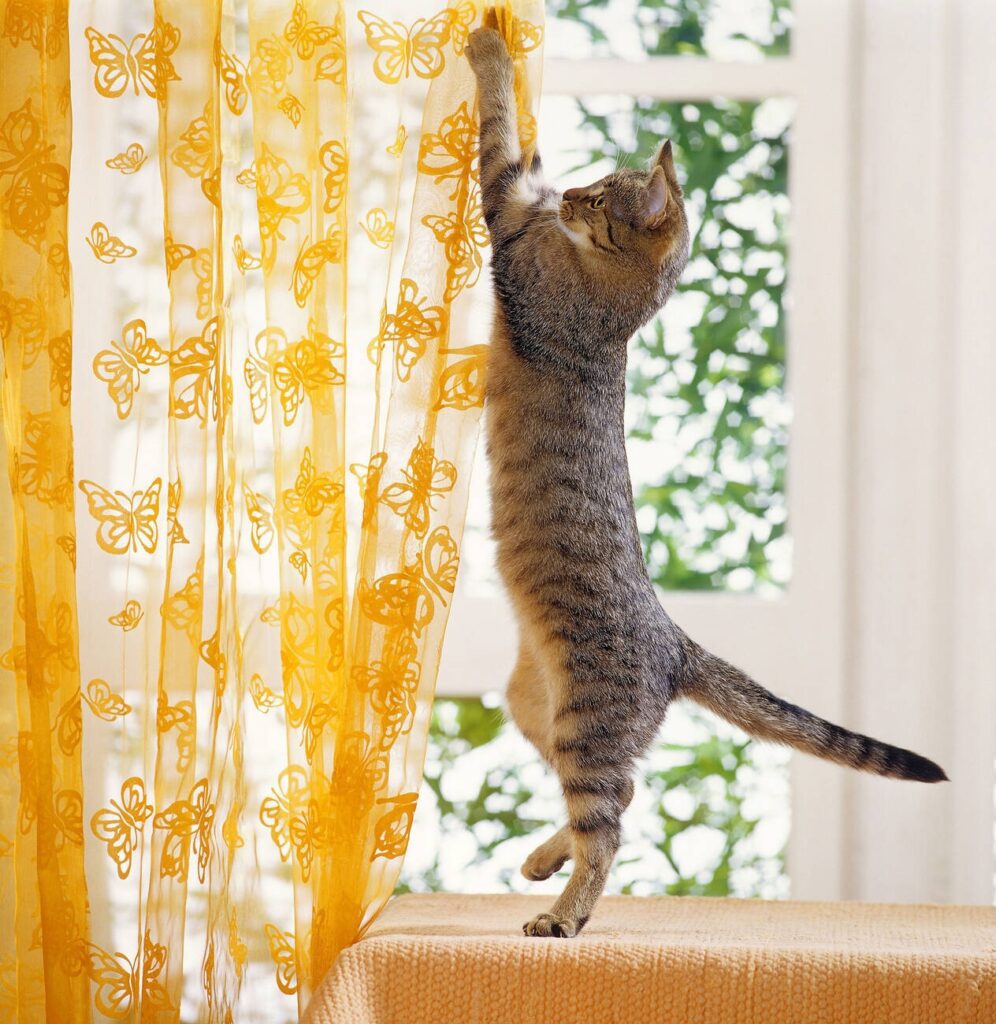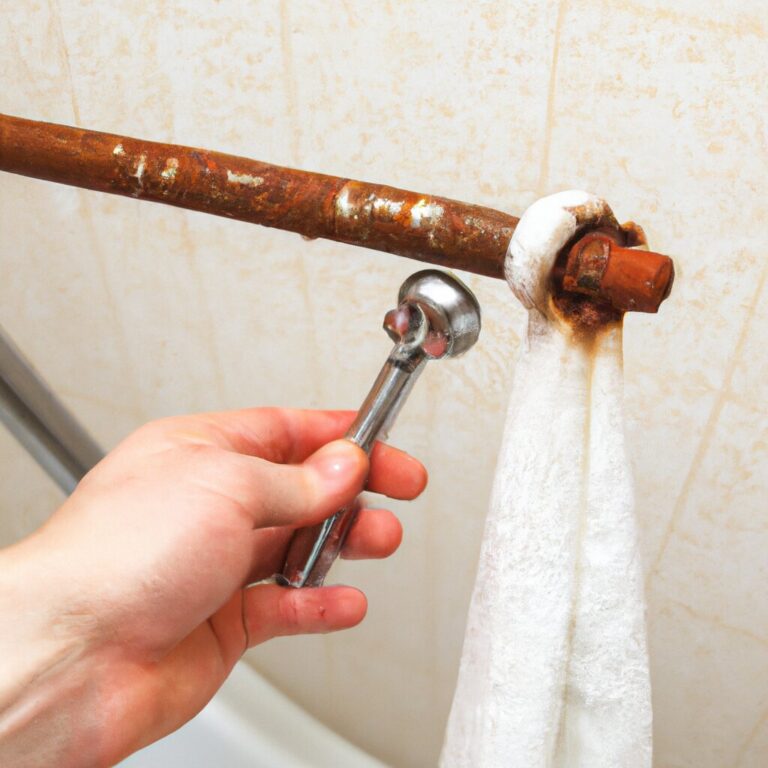How to Stop Cats From Climbing Curtains?
If you’ve ever experienced the frustration of finding your feline friend scaling your curtains like a tiny mountaineer, you’re not alone. Cats are naturally curious and agile creatures, often seeking out vertical spaces for exploration and play. However, this behavior can wreak havoc on your curtains and potentially pose safety risks for your pet. Fortunately, there are effective strategies to deter your cat from turning your curtains into their personal climbing gym.
In this guide, we’ll delve into the best way how to stop cats from climbing curtains, allowing you to maintain both your decor and your cat’s well-being.
Why Do Cats Climb Curtains?
Cats climb curtains for a variety of reasons rooted in their natural behaviors and instincts, including adult cats. This behavior can stem from their innate curiosity and love for exploration, as climbing provides them with a vantage point to observe their surroundings. Cats also have a natural desire to establish territory, and curtains offer a vertical space where they can leave their scent through their paw pads, which is an important aspect of understanding cat behavior.
Additionally, climbing serves as a form of exercise and energy release, especially in younger cats and kittens. Sometimes, curtain climbing can be attention-seeking behavior, a response to boredom or lack of mental stimulation, or even a way to alleviate stress or anxiety. To effectively address this behavior, it’s crucial to provide alternative outlets for their instincts and needs while ensuring a stimulating and enriched environment. If the behavior persists, it may be necessary to consult with a vet to rule out any underlying medical issues.
How to Stop Cats From Climbing Curtains?
Cats possess a natural inclination to explore, climb, and occasionally use your curtains as their personal jungle gym. While their antics might be entertaining, they can also lead to damaged curtains and potential safety hazards. Here are practical steps to prevent your furry friends from turning your drapes into their next adventure:
1. Provide Vertical Alternatives
Providing vertical spaces, such as cat shelves, is a fantastic way to address your cat’s climbing instincts and prevent them from scaling your curtains. Cat trees, shelves, and perches, such as a cat tower, offer a controlled environment where your feline friend can explore and climb to their heart’s content. These alternatives not only satisfy their natural desire to climb but also create designated spaces for observation and relaxation. By offering these vertical options, you’re effectively channeling your cat’s energy and curiosity away from your curtains and toward a more suitable outlet.
2. Use Scratching Posts
Scratching posts serve as invaluable tools for managing your cat’s climbing and scratching tendencies. Here’s how they can help:
Behavioral Diversion: Placing scratching posts strategically around your home provides your cat with enticing alternatives to climbing curtains. This redirection helps fulfill their natural instincts in a constructive manner. Additionally, installing a door alarm can help prevent your cat from scratching at doors and causing damage to the door alarm.
Satisfying Scratching Instincts: Cats have an innate need to scratch to mark their territory, shed old claw layers, and stretch their muscles. Scratching posts, infused with essential oil, offer the perfect outlet for these behaviors, saving your curtains from potential damage caused by claw marks.
Preserving Furniture: By providing scratching posts and normal curtain rods, you can protect your furniture and curtains from becoming scratching targets. Understanding your cat’s behavior is crucial in providing suitable alternatives for scratching, as they may choose their belongings for scratching if suitable alternatives are lacking.
Physical and Mental Stimulation: Scratching isn’t just about maintaining claws; it’s also a form of exercise that helps cats stay agile and strong. The act of scratching and jumping engages their muscles and provides mental stimulation, creating a heap of benefits for your feline friend.

Stress Reduction: Scratching can alleviate stress in kitties by releasing built-up tension. Placing scratching posts in areas where your cat spends time can create a sense of security and comfort.
Scent Marking: Cats have scent glands on their paw pads, and scratching leaves behind both visible marks and scent markings, including citrus scents. This helps them establish their territory and feel more at ease.
When introducing scratching posts, opt for various materials like sisal, cardboard, or fabric to cater to cat owners’ preferences. Place them near curtains or furniture your cat has shown interest in climbing or scratching. Ultimately, these posts offer a constructive and satisfying way for your cat to express natural behaviors, while also safeguarding your home’s decor.
3. Employ Double-Sided Tape
Using double-sided tape with aluminum foil can be an effective strategy to deter cats from climbing curtains and other surfaces you’d like to protect. To use this method, simply apply the double-sided tape along the edges of the curtains that your cat tends to climb. Cats are generally averse to the sticky texture of the tape on their paws, which serves as a deterrent. As they encounter the tape, they are likely to find the sensation uncomfortable and eventually avoid the taped areas altogether. This method is especially effective when using foil tape, as the reflective surface can also deter cats from climbing.
It’s important to monitor their behavior and adjust as needed. If you notice that your cat is avoiding the taped areas, you can gradually remove the tape. However, if they persist in their climbing behavior, it might be beneficial to leave the tape in place for a longer period. As you employ this technique, remember to provide alternative outlets for their natural behaviors, such as scratching posts and toys, to ensure they have appropriate ways to channel their energy and curiosity.
4. Rearrange Furniture
Adjusting your furniture layout can be a helpful tactic to prevent cats from climbing curtains. Here’s how it works:
Obstruction of Climbing Paths: By rearranging your furniture to create physical barriers between your cat and the curtains, you naturally obstruct their climbing routes. This can discourage them from attempting to scale the curtains in the first place.
Disruption of Habit: Cats often follow familiar paths when climbing or exploring. Altering the furniture arrangement disrupts their established routines, making climbing less appealing due to the unfamiliar obstacles.
Safe and Accessible Alternatives: As you rearrange furniture, provide accessible and attractive alternatives for your cat to explore, such as cat trees, shelves, or perches. This redirects their attention toward more suitable spaces for climbing and observation.
Visual Deterrent: The presence of furniture in front of the curtains can visually discourage cats from attempting to climb. The obstacles signal that the area isn’t as accessible, potentially deterring them from engaging in unwanted behavior.
Enhanced Environmental Enrichment: The rearranged furniture can create new avenues for exploration and play. Cats enjoy hopping from surface to surface, so a thoughtfully arranged environment can satisfy their natural instincts.
Accident Prevention: Placing furniture in front of curtains can help prevent accidents or damage caused by climbing, creating a safer environment for both your cat and your belongings.
Be sure to consider your cat’s comfort and safety while rearranging furniture, and provide positive reinforcement when they use the alternatives you’ve provided. Combining furniture placement with other preventive measures can be an effective strategy to stop cats from climbing curtains and promote a more harmonious living space.
5. Interactive Play
Interactive play is a fundamental aspect of ensuring your cat’s well-being and managing its behavior effectively. By setting aside time for daily play sessions using toys that replicate the movements of prey, you offer a range of benefits that extend beyond mere entertainment. These play sessions engage your cat’s natural hunting instincts, allowing them to engage in behaviors like pouncing, stalking, and chasing that are essential for their mental and physical health.
As your cat interacts with these prey-like toys, their cognitive abilities are stimulated, providing valuable mental exercise. This mental engagement is vital for preventing boredom and curbing unwanted behaviors, such as climbing curtains. Additionally, the physical activity involved in interactive play helps to maintain your cat’s physical fitness, prevent obesity, and keep their muscles toned. Redirecting their energy toward these play sessions fulfills their inherent need for stimulation and exploration, ultimately decreasing the likelihood of them seeking out curtains as an outlet for their energy.
Designating daily playtime not only ensures that your cat’s energy is appropriately channeled but also establishes a routine that can promote better behavior overall. By dedicating time to play, you create a strong bond between you and your feline friend, fostering trust and companionship. Ultimately, incorporating interactive play into your cat’s routine is a multifaceted approach that enriches their physical and mental health while effectively steering them away from problematic behaviors like climbing curtains.
6. Positive Reinforcement
Positive reinforcement is a highly effective approach to encouraging your cat to steer clear of curtain climbing. By rewarding your cat each time they opt not to engage in this behavior, you create a favorable connection between their actions and positive outcomes. Whenever you catch your feline friend refraining from scaling the curtains and instead exploring other avenues, such as using a scratching post or playing with toys, take the opportunity to show your appreciation.
This can involve offering treats, offering verbal praise, or providing affection. By consistently reinforcing their good choices, you are fostering a sense of accomplishment and instilling a habit of avoiding curtain climbing. Over time, this positive association can help reshape their behavior and lead to a more harmonious living environment for both you and your contented cat.
7. Utilize Cat Repellents

Cat repellents can be a valuable tool in your efforts to prevent cats from climbing curtains. Cat-safe commercial repellents are specifically designed to emit scents that cats find unpleasant. When applied to your curtains, these products create an environment that discourages climbing behavior. Cats rely heavily on their sense of smell, and when they encounter scents they dislike, they are more likely to avoid the treated area.
To utilize cat repellents effectively, select a product that is safe for both your cat and your curtains. Follow the manufacturer’s instructions for application. It’s important to note that these repellents are generally safe when used as directed, but it’s still a good idea to monitor your cat’s reaction to ensure they aren’t overly bothered by the scent.
Keep in mind that while cat repellents can be useful, they are most effective when combined with other strategies, such as providing alternative climbing options and engaging in interactive play. By offering a well-rounded approach to managing your cat’s behavior, you can create an environment that encourages positive habits while discouraging unwanted actions like climbing curtains.
8. Motion-Activated Devices
Motion-activated devices offer an innovative approach to deterring cats from climbing curtains. These devices, such as air canisters, operate by sensing movement in proximity to the curtains and releasing a harmless burst of air in response. This sudden burst startles the cat, creating a surprising and undesirable experience. Through this process, cats quickly learn to associate their curtain-climbing behavior with the unexpected burst of air, effectively teaching them to avoid the area altogether.
By providing an immediate and consistent consequence for their actions, motion-activated devices aid in breaking the habit of curtain climbing without causing any harm. When used thoughtfully and in conjunction with other strategies, these devices can contribute to fostering a more harmonious living space for both you and your feline companion.
9. Modify Curtain Setup
Modifying your curtain setup can prove to be a practical solution in curbing cats’ climbing tendencies. Selecting curtains crafted from heavier fabrics adds an extra layer of deterrence, as these materials are harder for cats to grip. Additionally, employing curtain ties or clips to limit the movement of the curtains can be a strategic move.
Curtains that remain relatively stationary are less enticing to cats, as they lack the dynamic movement that often lures them to climb. By thoughtfully modifying your curtain setup, you create an environment that is less conducive to this behavior. This, coupled with other preventative measures and alternative outlets for their energy, contributes to fostering a harmonious living space for both you and your feline companion.
10. Consistent Training

Consistent training forms the cornerstone of effectively managing your cat’s curtain-climbing behavior. When you notice your cat in the act of attempting to scale the curtains, take the opportunity to gently guide them toward a more appropriate alternative, such as a designated scratching post or a cat tree. By consistently intervening and redirecting their attention, you provide them with clear guidance on what behavior is acceptable in your home.
With patience and repetition, your cat will gradually grasp the connection between appropriate alternatives and positive experiences. Over time, this consistent training approach instills the understanding that climbing is acceptable in certain designated spaces, fostering a more harmonious coexistence between you, your cat, and your curtains.
11. Supervision and Patience
Supervision and patience are essential when addressing your cat’s curtain-climbing behavior. While your cat learns to adjust their habits, it’s important to maintain vigilant observation whenever they are near the curtains. This allows you to intervene promptly and redirect their attention to appropriate alternatives if they show any inclination to climb. Patience is key in this process, as breaking habits takes time.
Understand that your cat might not change overnight, and some persistence will be necessary. By consistently supervising and offering guidance, you create a supportive environment that helps your cat transition away from curtain climbing. Over time, their behavior is likely to shift as they become accustomed to the new expectations and redirected outlets for their energy and curiosity.
Are there any specific types of curtains that are less attractive to cats?
Curtains made of heavier fabrics, such as velvet or suede, are generally less attractive to cats as they provide less traction for climbing. Additionally, curtains with a shorter length that don’t touch the floor may be less tempting for cats to climb on.
Frequently asked questions
Are there any potential risks associated with cats climbing curtains?
Yes, climbing curtains can lead to potential accidents, torn curtains, and damage to both the curtains and surrounding furniture.
Are there specific breeds more prone to curtain climbing?
Some active and playful breeds, like Bengals and Siamese, may have a higher tendency to climb curtains, but behavior can vary within breeds.
Can older cats be trained to stop climbing curtains?
Yes, older cats can learn new behaviors through consistent training and redirection, although it may take more time than with kittens.
Are there long-term benefits to addressing curtain climbing?
Addressing curtain climbing prevents damage, creates a safer environment, and promotes a harmonious relationship between you and your cat.
Can I use essential oils as cat repellents on curtains?
Some essential oils can be toxic to cats. It’s safer to use commercially available cat-safe repellents to deter climbing behavior.
Will neutering or spaying my cat affect their curtain climbing behavior?
Neutering or spaying may reduce certain behavioral tendencies, but it’s best to combine it with other methods to effectively address curtain climbing.
Can curtain climbing indicate an underlying health issue in my cat?
While curtain climbing is often a behavioral matter, it’s a good idea to consult a veterinarian if you notice sudden or extreme changes in your cat’s behavior.
Should I trim my cat’s nails to prevent curtain climbing?
Regular nail trimming can minimize the damage caused by scratching but won’t necessarily prevent climbing behavior.
Conclusion
In conclusion, addressing the issue of cats climbing curtains requires a comprehensive and patient approach. By understanding their natural instincts and providing suitable alternatives, such as vertical spaces and scratching posts, you can redirect their energy in a positive direction. Combining strategies like using double-sided tape, motion-activated devices, and positive reinforcement helps create an environment that discourages curtain climbing while promoting positive behaviors.
Consistent training, supervision, and modifications to your curtain setup further contribute to fostering a harmonious living space for both you and your feline companion. Remember, while it may take time for habits to change, your efforts will lead to a happier cat and a home that remains aesthetically pleasing and intact.







